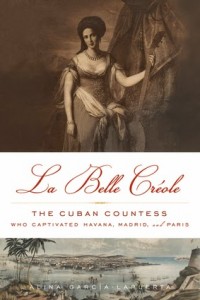How To Write a Nonfiction Proposal
 We’ve all been there – you’ve been secretly scribbling away, researching, collecting interesting sources or articles, and googling like mad. Finally, one day you think, “Could I take my secret project and turn it into a real book? Would anyone want to publish it, or even read it?”
We’ve all been there – you’ve been secretly scribbling away, researching, collecting interesting sources or articles, and googling like mad. Finally, one day you think, “Could I take my secret project and turn it into a real book? Would anyone want to publish it, or even read it?”
In my particular case, I had yet another hurdle to overcome – I wanted to write nonfiction, specifically biography. Was I even qualified, I thought? I didn’t even know where to begin. I was more than a newbie; I was clueless.
Sometimes, however, the stars align. In my case, they aligned on a mountain top in France during a family vacation. Checking my emails, I saw one from my alma mater’s career services offering various free webinars. One caught my eye: How to Find a Literary Agent for Nonfiction.
And that, my friends, is how I first heard the phrase “nonfiction book proposal.” After that webinar, I worked on crafting a proposal and sample chapter, found an agent, and, eventually, a publisher. The result was my first commercial biography: La Belle Créole: The Cuban Countess who Captivated Havana, Madrid, and Paris.
Since then, I have been asked many times how the process works for nonfiction. At book events, it’s one of the most frequently asked questions. I also see this topic repeatedly posted on FB writing groups. I thank my lucky (aligned!) stars every day that I took the webinar. I have since read several books (there are countless how-to-write-a-proposal books out there), and they all left me confused as to what is really required.
As I am now in the middle of a new proposal, I thought it would be a good time to share my experience (and my agent’s recent advice) with others. So here, in a nutshell, are the basics to putting together a proposal. One caveat – I have only written ones for biography, and there are subtle differences depending on the subject or topic. But I believe the fundamentals are the same, and, hopefully, I can answer some of your questions.
 Think of the proposal as a business plan for your book, only instead of investors or clients, you need to convince an agent to represent you, or a publisher to give you a contract. Therefore, you need to answer several key questions in this document: why this book, why you as the author, who is your audience, your competition and how you will market it. The proposal should also explain how you plan to execute the book, providing a detailed chapter outline. Finally, you should include a taster in the form of a sample chapter. This last point is especially important if it’s your first book – agents and publishers need to see how you write.
Think of the proposal as a business plan for your book, only instead of investors or clients, you need to convince an agent to represent you, or a publisher to give you a contract. Therefore, you need to answer several key questions in this document: why this book, why you as the author, who is your audience, your competition and how you will market it. The proposal should also explain how you plan to execute the book, providing a detailed chapter outline. Finally, you should include a taster in the form of a sample chapter. This last point is especially important if it’s your first book – agents and publishers need to see how you write.
That last point is the biggest difference between selling fiction and nonfiction: you don’t have to actually write the book before you pitch it. You do, however, have to do a fair amount of research in order to be able to complete a convincing proposal. Just how much research is required is a tough question, and one that will depend, in part, on the topic and your knowledge of the subject.
The first question (why this book) is probably the key one. The concept requires some real thought and care, answering not only the purpose of the book, but also why this is an appropriate time for this book. The concept section should be fairly detailed and my own agent has generally advised it should read like a story. Oh, and length? My last concept section was about 30 pages!
The second question (why you as the author) is closely tied to the concept. This is where you are selling your credibility, your expertise or even your relationship to the subject. Are you a recognized expert in a field? A successful practitioner? A historian? In the case of a local subject or topic (maybe a well-known personage from your town), your insider’s knowledge and access to sources or special materials should be mentioned.
This is also a good place to emphasize your platform (that dreaded word). Are you active on social media, involved in professional associations, have media links or contacts? This also can be further developed in a section related to marketing opportunities and ideas.
Identifying your target audience is also important – it can be mentioned with the concept or even included in its own section. Wherever you place it, the discussion should be as detailed as possible; stating that this book is for everyone will not help sell it to either agents or publishers. Use some creativity here and brainstorm every possible angle. Use your familiarity with the topic to think of less obvious markets.
The audience section is also related to comparable titles (your competition or other similar books). A little research might be necessary as the comparable titles should be recent publications, rather than backlist. Highlighting the similarities and differences between each title and your own book is crucial in placing your proposal within a publishing context – giving an agent or publisher an idea of how you see this book and how it will appeal.
The detailed chapter outline is probably one of the most debated sections. In my own case, I write at least one paragraph for each chapter, expanding on what it will contain. This may seem daunting at such an early stage, but remember, you can always change it later! The same flexibility applies to your sample chapter.
My last piece of advice – if appropriate – include photos or images that might bring your subject to life. My agent specifically requested this in my most recent proposal.
So there it is – how to create a nonfiction book proposal. Now take a deep breath and a leap of faith into the nonfiction world. Hopefully, your dream or idea will turn into a published book!
—
Alina García-Lapuerta, a native Spanish speaker, was born in Cuba. A graduate of Georgetown University’s School of Foreign Service and Tufts University’s Fletcher School of Law and Diplomacy, she is member of Biographers International Organization, and The Biographers’ Club of London. Based in London with her Spanish-American husband and their two children, Alina still spends considerable time in South Florida.
Find out more about Alina on her site www.alinagarcialapuerta.com
Follow her on twitter @GarciaLapuerta and Facebook Alina-Garcia-Lapuerta
Buy La Belle Creole HERE
Category: How To and Tips

























Comments (2)
Trackback URL | Comments RSS Feed
Sites That Link to this Post